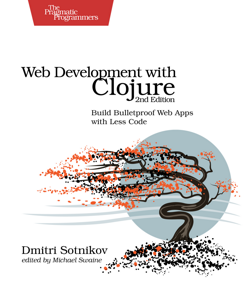Migrations
By default Luminus uses the Migratus library for database migration and schema management. When you select the +mysql, or +postgres profiles a migrations configuration will be added to the project.clj file in your application.
Migrations with Migratus
The development database configuration should placed in the dev-config.edn file. This file specifies your local configuration and should not be checked into the source repository.
{:database-url "jdbc:postgresql://localhost/myapp_dev?user=appuser&password=secret"}
For production, the configuration is expected to be present in the environment. An example would be to have a shell variable called DATABASE_URL that points to the URL. See the official cprop documentation for the complete list of configuration options.
Migratus is invoked from the -main function in the <app>.core namespace of the application.
By default, the SQL migration scripts are expected to be found in the resources/migrations directory in the root of the project. A custom directory can be set in the <app>.db.migrations namespace. With the directory created we can start adding our migrations SQL scripts there.
Migration ids are not assumed to be incremented integers and are considered for completion independently. The recommended way to keep migrations ordered is by prefixing the current date to the name of the script.
Before migrations can be run, we have to ensure that the database connection has been started. By default, the connection is defined in the <app>.db.core namespace as:
(defstate ^:dynamic *db*
:start (conman/connect! {:jdbc-url (env :database-url)})
:stop (conman/disconnect! *db*))
When the <app>.db.core namespace has been referenced in the project for the connection, it will be started automatically. To start the connection manually, run the following command in the REPL:
(mount.core/start #'<app>.config/env #'<app>.db.core/*db*)
Let's create two scripts, one for the migration and the other for the rollback. The files can be generated from the REPL as follows:
(user/create-migration "add-users-table")
This will generate the appropriate files in the migrations directory. We'll update the up migrations file with the script to create the table:
resources/migrations/201506120401-add-users-table.up.sql
CREATE TABLE users (id INT, name VARCHAR(25));
Then we'll update the corresponding down migrations file with script to drop it:
resources/migrations/201506120401-add-users-table.down.sql
DROP TABLE users;
The migrations can now be invoked by running:
lein run migrate
boot dev [ run migrate ]
lein run rollback
boot dev [ run rollback ]
To apply specific migrations, run the above commands with the desired migrations ids:
lein run migrate 201506104553 201506120401
lein run rollback 201506104553 201506120401
boot dev [ run migrate 201506104553 201506120401]
boot dev [ run rollback 201506104553 201506120401]
The migrations will be packaged in the applications when it's compiled. This allows the application to apply its own migrations when deployed to the server:
lein uberjar
java -jar target/uberjar/<app>.jar migrate
boot uberjar target
java -jar target/<app>.jar migrate"
Popular Migrations Alternatives
Below is a list of all the popular migration libraries that are currently available:
- Drift - Drift is a migration library written in Clojure. Drift works much like Rails migrations where a directory in your project contains all of the migration files. Drift will detect which migration files need to be run and run them as appropriate.
- Ragtime - a general migration framework, with an implementation for database migrations.
- Joplin - Joplin is a library for flexible datastore migration and seeding
 Luminus
Luminus
